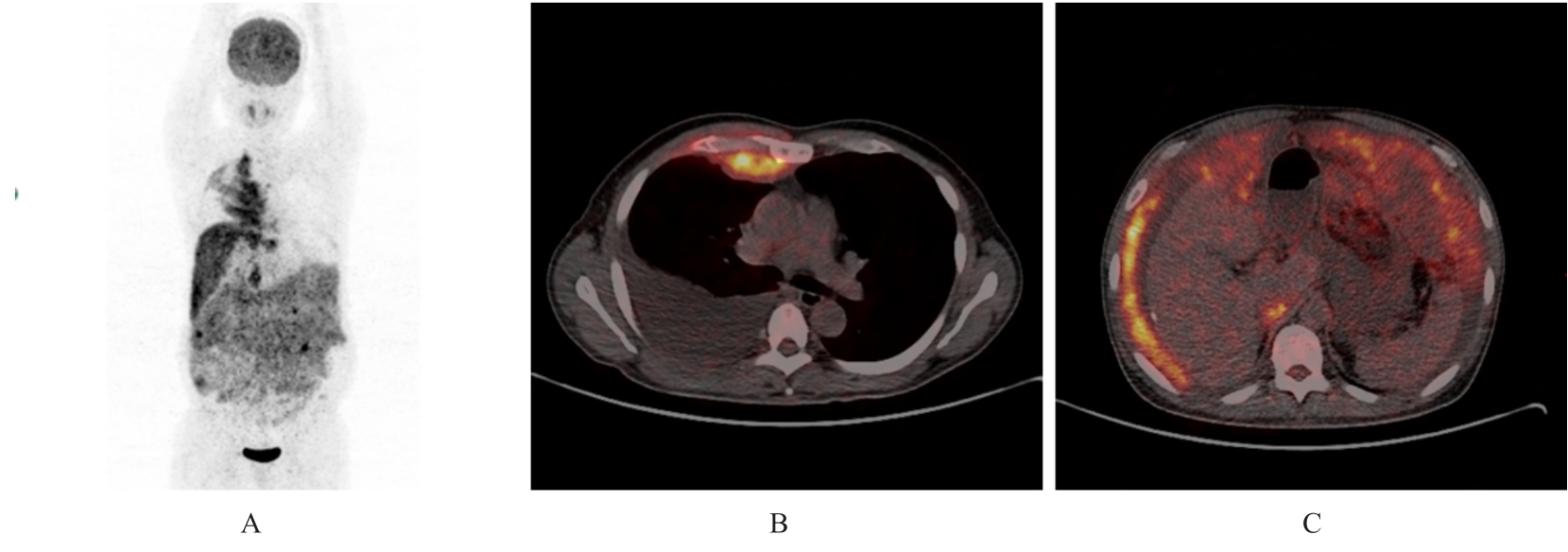| [1] |
Xue BAI,Chenchen WANG,Zhangzhen SHI,Lintao BI.
Analysis on correlation between body components at T4 thoracic vertebra plane on chest CT in patients with multiple myeloma and prognosis
[J]. Journal of Jilin University(Medicine Edition), 2024, 50(4): 1098-1108.
|
| [2] |
Yunyun SUN,Yuguang YAO,Han ZHANG,Hanyi LI,Xianchun ZHU.
Structural characteristics of mandible in patients with different osteofacial types measured by CBCT and influencing factors of mandibular retromolar space
[J]. Journal of Jilin University(Medicine Edition), 2023, 49(6): 1561-1568.
|
| [3] |
Shengnan YANG,Xue WANG,Xuefeng WANG,Tianyu ZHAO,Ying PAN,Dayong DING.
Retroperitoneal giant lymphangioma: A case report and literature review
[J]. Journal of Jilin University(Medicine Edition), 2023, 49(2): 508-513.
|
| [4] |
Ping HU,Nan JIANG,Yinghua LI,Hongguang ZHAO.
Analysis on characteristics of 18F-FDG PET/CT imaging of patient with primary small cell osteosarcoma of coccyx:A case report and literature review
[J]. Journal of Jilin University(Medicine Edition), 2022, 48(1): 216-221.
|
| [5] |
Qi ZHU,Lamei LI,Yanjun CAI,Fang XU,Junqi NIU,Wanyu LI.
Hepatoid adenocarcinoma of stomach:A case report and literature review
[J]. Journal of Jilin University(Medicine Edition), 2021, 47(4): 1028-1032.
|
| [6] |
LI Ying, QIU Tianyuan, BAO Xingfu, HU Min.
Evaluation on expansion efficiency of microimplant-assisted rapid palatal expansion in treatment of maxillary transverse deficiency in adolescents with CBCT
[J]. Journal of Jilin University(Medicine Edition), 2020, 46(05): 1050-1055.
|
| [7] |
ZHANG Li, QUAN Tao, LIU Dayong, JIA Zhi.
Effects of different root canal filing materals on root flexure resistance after random load fatigue test detected by Micro-CT
[J]. Journal of Jilin University(Medicine Edition), 2020, 46(04): 822-827.
|
| [8] |
ZHOU Dongkui, LU Mingqian, FENG Xuesong, LIU Yufei, SONG Hao, XU Liang.
Follicular dendritic cell sarcoma of small intestine and ileocecal region: A case report and literature review
[J]. Journal of Jilin University(Medicine Edition), 2020, 46(04): 858-862.
|
| [9] |
GUO Fei, ZHU Lin, XU Hong, XIE Zongyu, ZHANG Li, DENG Xuefei.
Analysis on correlation between image features of chest MSCT and prognosis in patients with novel coronavirus pneumonia
[J]. Journal of Jilin University(Medicine Edition), 2020, 46(04): 867-874.
|
| [10] |
JING Wenhua, LI Hongyu, GUAN Yinghui.
Comparison of values between Wells score and YEARS algorithm in dignosis of pulmonary embolism
[J]. Journal of Jilin University(Medicine Edition), 2019, 45(01): 88-93.
|
| [11] |
FENG Qing, WEN Ming.
CT manifestations of hepatic lesions without obvious enhancement in arterial phase and their significancs in differential diagnosis
[J]. Journal of Jilin University(Medicine Edition), 2019, 45(01): 163-169.
|
| [12] |
ZHANG Kesong, XU Xiaolin, HAN Qing, ZOU Yun, CHEN Bingpeng, YANG Kerong, JIANG Hao, WANG Jincheng.
Application of orthopedic metal artifact reduction technology in CT examination of arthroplasty
[J]. Journal of Jilin University(Medicine Edition), 2019, 45(01): 179-183.
|
| [13] |
WANG Baogang, MAN Xiaxia, MA Dashi, WANG Yong, CAO Dianbo.
Huge thrombus in ascending aorta:A case report and literature review
[J]. Journal of Jilin University(Medicine Edition), 2018, 44(05): 1065-1067.
|
| [14] |
LI Xiao, QIU Xiang, MA Zhenhui, TIAN Yaping.
Skin metastatic carcinoma complicated with herpes zoster:A case report and literature review
[J]. Journal of Jilin University Medicine Edition, 2018, 44(04): 825-827.
|
| [15] |
ZHU Gang, SUN Haibin, WANG Hu, XU Gang.
Comparison of diagnosis value of MRI, CT and histopathological features on liposarcoma of extremities
[J]. Journal of Jilin University Medicine Edition, 2017, 43(06): 1215-1219.
|
 )
)











